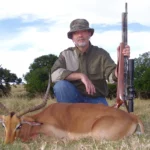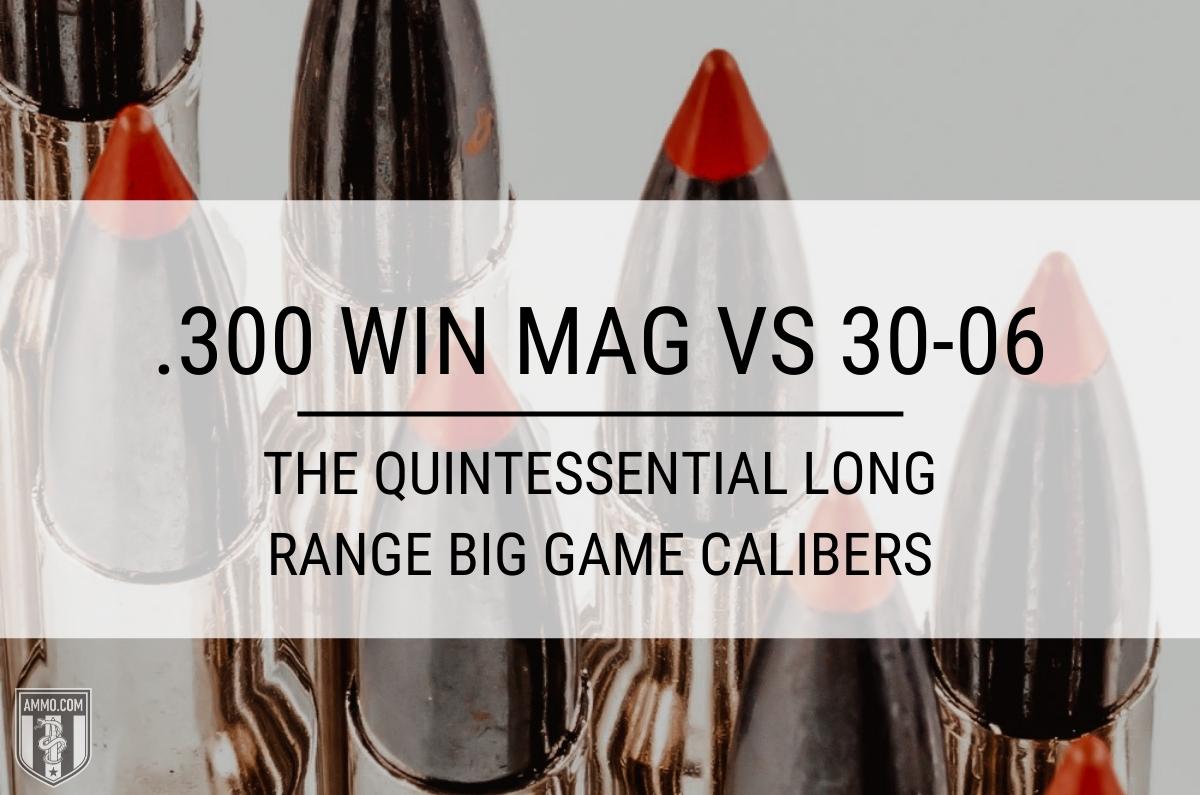 As you take your seat next to the crackling campfire at elk camp, you look up as the sparks flutter into the night sky. The evening is brisk, and you are looking forward to the hot coffee that is starting to boil in the blue enamel kettle on the fire.
As you take your seat next to the crackling campfire at elk camp, you look up as the sparks flutter into the night sky. The evening is brisk, and you are looking forward to the hot coffee that is starting to boil in the blue enamel kettle on the fire.
Your hunting buddies soon join you after a long day of stalking and regale their tales of the events that transpired. Near misses, huge bull elk sightings, and jokes about who are the worst shooters in the group pass the time as you soak in the atmosphere and scent of the forest that surrounds you.
As the evening progresses, the discussion turns towards which hunting cartridge is ideal for big game hunting in North America.
When it comes to long-distance big game hunting, the 30-06 Springfield and 300 Winchester Magnum are ever-present in the discussion around the campfire or internet hunting forums.
Many claim that the high muzzle velocity, flatter trajectory, and longer effective range make the 300 Win Mag the obvious choice. However, some contest that the 30-06 is more than sufficient for any large game, and the added recoil and hunting rifle weight of the 300 Win Mag are not needed.
But which of these 30-caliber cartridges is ideal for your next hunt?
The Difference Between .30-06 vs .300 Win Mag: Two 30-Caliber Giants
The 30-06 Springfield and the .300 Win Mag are two extremely capable long-range shooting cartridges that will serve you well when the moment arises. Both hunting cartridges fire the 30 caliber bullets accurately and it’s unlikely that we will be able to determine a winner per se.
The 300 Winchester Magnum was designed as a long-distance magnum cartridge to fire heavier bullets with extreme precision at a high effective range like that of the 6.5 Creedmoor.
The 30-06 Springfield was designed as a military cartridge that found amazing success in the realm of big game hunting. With its spectacular terminal ballistics, the 30-06 has claimed every large game animal on the North American continent and has been the hunting rifle chambering of choice for no less than 3 generations.
Each hunting cartridge has its advantages and disadvantages, and you need to be aware of these when choosing the caliber of your next target shooting or hunting rifle.
Cartridge Specs
Both the 300 Win Mag and the 30-06 fire the same diameter bullet, 0.308”. This means that they can typically fire the same 30 caliber bullets, so it makes reloading simpler for both calibers.
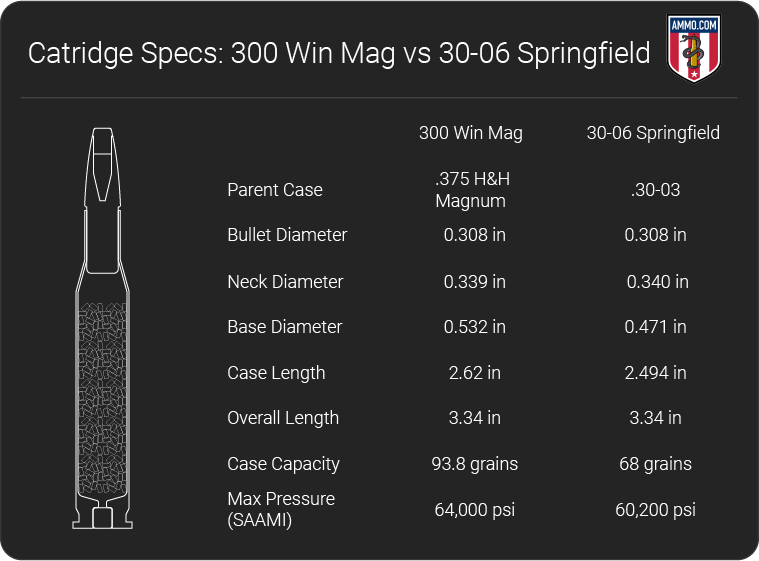
The first striking difference that you’ll see when comparing the .300 Win Mag and the 30-06 is the difference in case length. The 300 Win Mag is a full 0.12” longer than the 30-06 and you can easily see this when comparing them side by side. However, once loaded, both the 30-06 ammo and the .300 Win Mag will have the same overall case length.
The overall design of the 300 Win Mag also lends itself to increased case capacity. The .300 Win Mag has over 35% more case capacity than the 30-06, allowing for larger powder charges and higher velocity that lends itself to long-range shooting.
As far as pressure, the .300 Win Mag is capable of handling over 3,000 psi more pressure than the 30-06. But all of that increased case capacity and powder charge come at a price, recoil, and barrel life.
Recoil
There’s no denying that the recoil plays a key part in accuracy, and neither the .300 Win Mag nor the 30-06 is a slouch when it comes to recoil.
Recoil also plays a part in follow-up shots, as you can get your sights back on target faster with a lower recoiling rifle.
As I’m sure you have guessed, the 300 Win Mag has higher felt recoil than the 30-06. Assuming a 7 lb rifle for both calibers, the .300 Win Mag has approximately 35 ft-lbs of recoil, while the 30-06 is slapping your shoulder with 23 ft-lbs. That’s a good 12 ft-lbs less recoil for the 30-06, and that’s not nothing.
However, there is another factor that we need to consider, and that’s rifle weight. Often a .300 Win Mag will garner a larger rifle. Although this might be uncomfortable to backpack through the woods all day, a heavier rifle will reduce the felt recoil a shooter has to endure as the rifle soaks up some of the recoil itself.
With a rifle weighing 9 lbs, the felt recoil for .300 Win Mag will come down to about 27 ft-lbs of shoulder punishment.
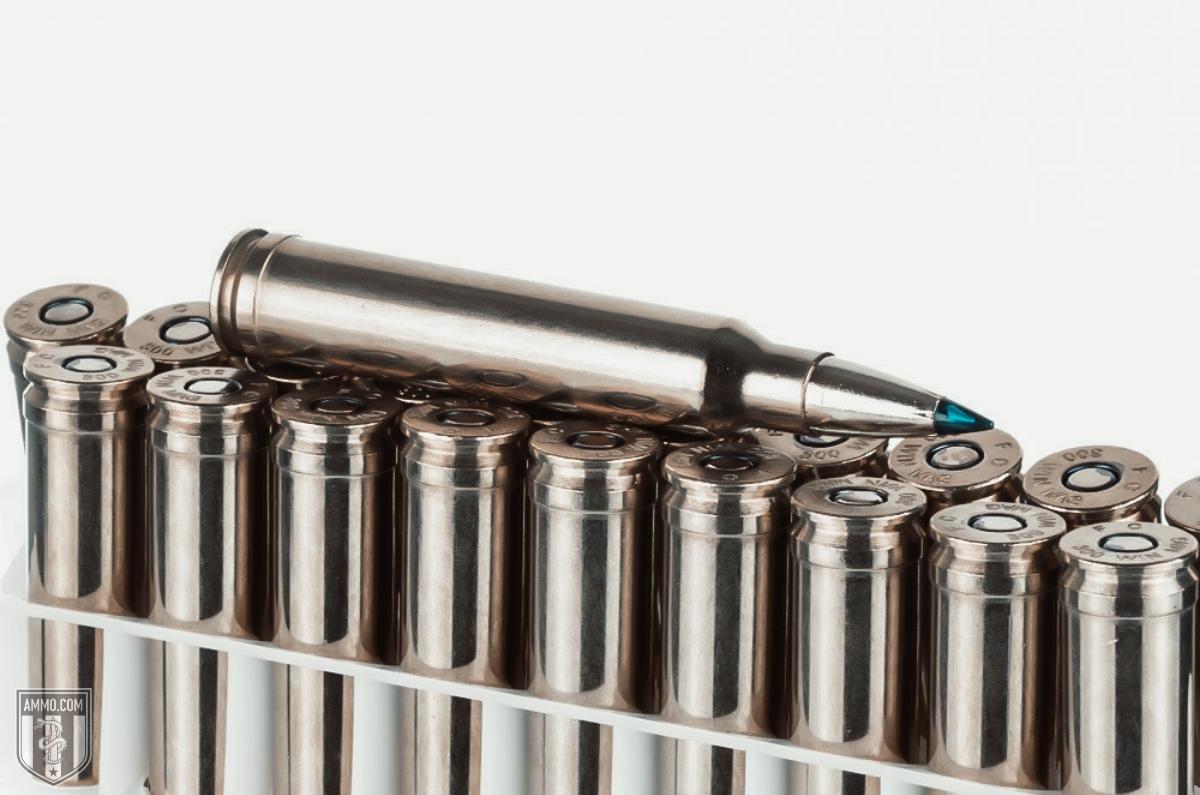
Although this is a lot more manageable, you still must carry a 9-pound rifle through the woods all day, and that can wear on your endurance as well. In the end, it’s a trade-off, a heavier rifle recoils less but is more uncomfortable to carry while a lighter rifle will recoil more but be more comfortable to carry through the woods.
Many hunters will just say you need to “man up” because shooting the more powerful .300 Win Mag is worth it. But is it?
When shooting at longer ranges, consistency is key. Although the flat shooting trajectory of the 300 Win Mag is more favorable for long-range shots, the added recoil can add a level of difficulty focusing on the fundamentals of shooting, particularly a clean trigger squeeze.
For younger shooters, there is no question, the 30-06 with less recoil is the obvious choice. For more seasoned hunters and shooters, you need to be honest with yourself about your marksmanship skills and ability to handle the recoil.
Because a little trigger jerk at 400 yards will send that 220 gr Hornady ELD-X under the belly of that trophy mule deer. Or worse, you wound the poor animal with a shot that misses all the vitals entirely.
The simple truth is that it is easier to be more accurate with a 30-06 as it has less recoil, and you can practice with it more.
Barrel Life
This is another category that favors the 30-06 Springfield as the .300 Win Mag is notoriously hard on barrels. This is due to the larger powder charge that the cavernous case capacity of the 300 Win Mag allows.
Sure, you can send those 30 caliber bullets screaming out of the barrel at ridiculously high velocity, decidedly higher velocity than the 30-06. But those magnum powder charges are going to accelerate your barrel wear, especially in the throat where the rifling begins.
Traditional wisdom states that a 30-06 barrel is good for 3,000 to 4,000 rounds while the .300 Win Mag barrel will maintain peak accuracy for 2,500 to 3,000 rounds.
For most hunters, it is unlikely that they will ever wear out a 300 Winchester Magnum barrel.
However, for long-range shooting competitors, it is not uncommon to go through a lot of rounds in a practice session. These shooters demand the pinnacle of accuracy from their handloads and barrels, therefore barrel life is much more important for competitive shooters as opposed to hunters.
Accuracy
Accuracy is a tricky category to empirically analyze as there are factors that cannot be calculated. The rifle system being used, barrel life, consistency of ammo, the skill of the shooter, and environmental conditions all play a part in accuracy.
All things being equal, both the .300 Win Mag and the 30-06 are extremely accurate within their effective ranges and sub-MOA accuracy is achievable with match-grade ammo, proper optics, and proper execution of the fundamentals of marksmanship.
As the .300 Win Mag has a flatter trajectory, this gives it a slight edge in accuracy over the 30-06 as a shooter will need to make fewer adjustments to account for bullet drop.
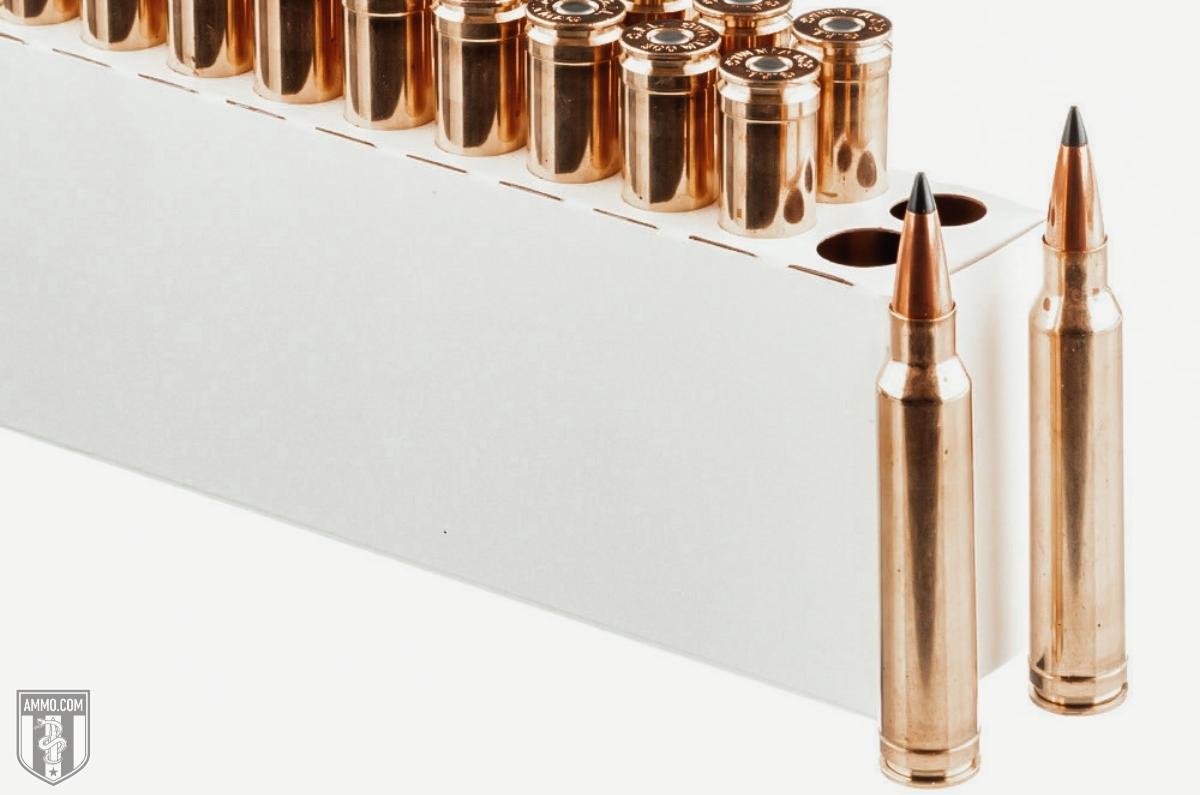
Furthermore, the Army selected the 300 Win Mag as its ammo for their new Enhanced Sniper Rifle in 2010 (though the 6.5 Creedmoor is turning some heads at USSOCOM).
Effective range also plays a part in accuracy, as once a bullet goes subsonic, accuracy goes out the window.
The .300 Win Mag is rated out to a maximum effective range of 1,300 yards while the 30-06 starts going subsonic right around the 1,000-yard marker. Under 800 yards, with all things being equal, I doubt many shooters could detect any differences in accuracy. Over 800 yards it will become more apparent as the 30-06 starts to hemorrhage fps quickly and the 300 Win Mag is still trucking along.
For shots over 800 yards, the 300 Win Mag will be the better option. However, for shots within ethical hunting ranges and below 800 yards, accuracy should be equal for these two hunting cartridges.
Trajectory
Trajectory is how we quantify a bullet’s flight path to its target measured in inches of bullet drop.
For the purpose of discussion, we will look at the 180 grain bullet that both cartridges fire.
Short-range trajectory for the 300 Win Mag and 30-06 are fairly close, at -18” and -27” respectively. Nine inches is not insignificant, but the difference between these two cartridges really shows when you hit the 1000-yard line.
At 1,000 yards, the 30-06 has dropped on average -397” while the 300 Win Mag has only dropped -295”. That’s 8.5 feet difference between the two cartridges.
This is one of the main reasons that the 30-06 is not used in long-range target shooting competitions and the 300 Win Mag is often seen on the 1,000-yard firing line.
The .300 Win Mag was specifically designed to be a high velocity, flat shooting round similar to the 6.5 Creedmoor and it excels at this role. There’s no denying that for longer ranges, the .300 Win Mag is the superior choice.
Effective Range
This is another category where the .300 Win Mag runs away with the victory.
As mentioned earlier, the 300 Winchester Magnum can maintain supersonic bullet speeds out to 1,300 yards, with some match grade loads reaching out to 1,400 and even 1,500 yards.
The 30-06 Springfield will start to go subsonic right around the 1,000-yard line and accuracy will drop off significantly.
The .300 Win Mag has cornered the market in terms of effective range.
Ballistic Coefficient
When I start talking about ballistic coefficient (BC) to my shooting buddies, I often get a “deer in headlights” look.
In short, the ballistic coefficient for a given bullet is a measure of how well it resists wind and air resistance. It’s a numeric representation of how aerodynamic a bullet is, a high BC is preferred and means the bullet will buck the wind easier.
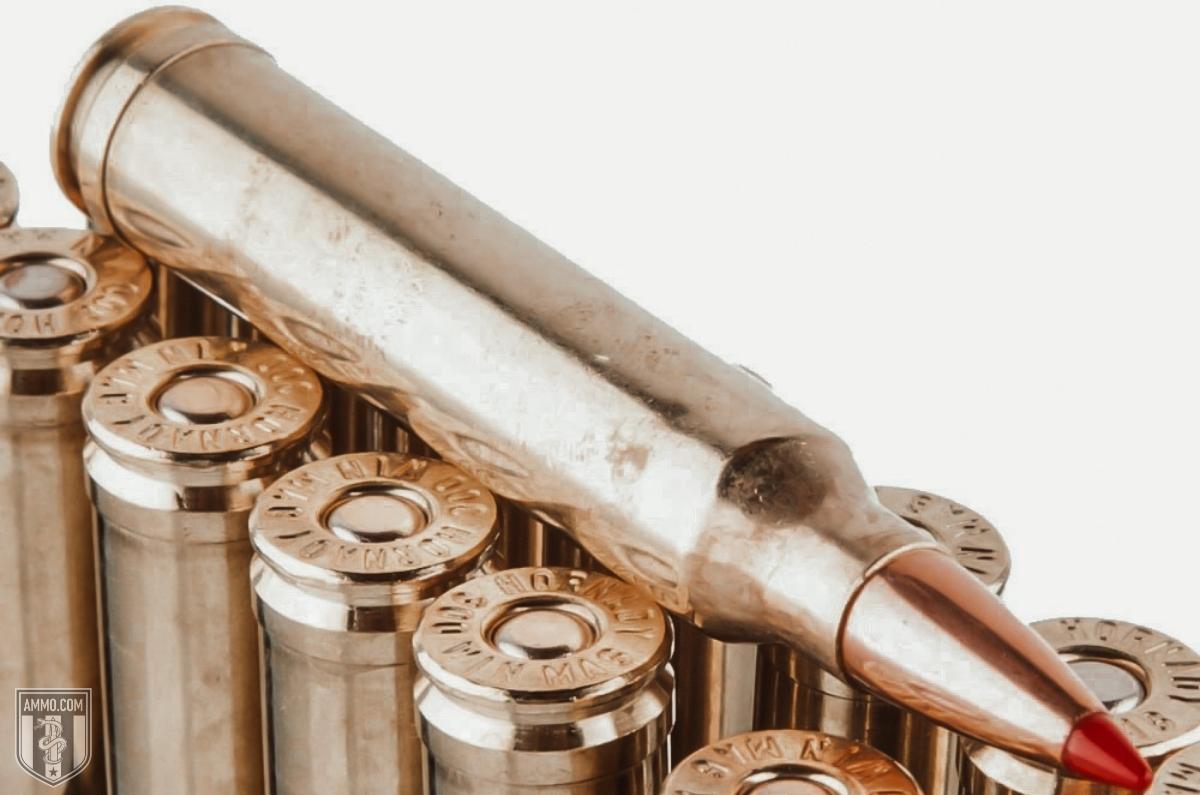
The way a bullet’s ballistic coefficient is calculated is a bit complicated, so we won’t cover that today as I don’t want your eyes to glaze over!
Generally, a heavier bullet will have a higher BC.
As the 300 Win Mag and the 30-06 Springfield fire the same bullet diameter, there is not a lot of difference in ballistic coefficients between the two cartridges.
The .300 Win Mag does pull away a little when you start to factor in the heavier 190+ grain loadings, but it is not a significant difference.
If we look at this in a hunting context, I doubt that any hunters will be able to detect a difference in wind drift under 300 yards, which is where the majority of shots will occur.
Therefore, there is not a major difference between these two rounds in terms of ballistic coefficient as most offerings stick between the 0.45-0.5 range, which is an exceptional BC.
There are a few 30 caliber bullets that break the 0.6 BC, which would be ideal for long-range target shooting for the 300 Win Mag. Those bullets would be the Nosler Trophy Grade AccuBond Long Range 190 gr (0.64 BC) and the Barnes Precision Match OTM 220 gr (0.611 BC).
Sectional Density
Sectional Density (SD) is the measure of how well a bullet penetrates a target. This is extremely important when hunting big game, as you need a bullet that can punch through thick hide, bone, and sinew.
Sectional density is calculated by comparing the bullet weight and the bullet diameter, the higher the number the more effective it will be at penetrating a target. The higher the SD the deeper the bullet will penetrate the target.
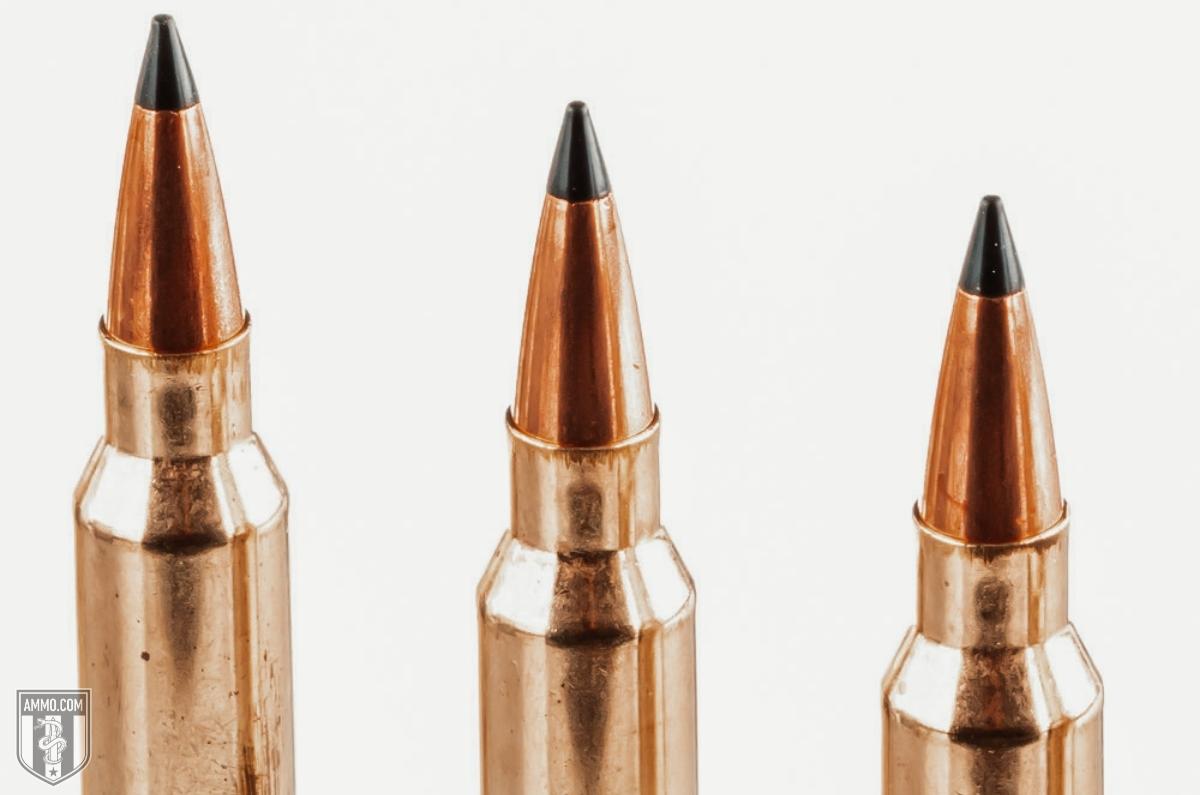
Just like for ballistic coefficient, there is not much difference between the 30-06 and the .300 Win Mag as they fire the same .308” diameter projectiles, with a slight advantage for the heavier 300 Win Mag loadings.
Another small advantage is the higher velocity that the 300 Win Mag can achieve with its higher case capacity. This added velocity over the 30-06 Springfield will allow the .300 Win Mag to penetrate just a bit deeper.
However, both the 30-06 Springfield and the 300 Winchester Magnum will give you devastating penetration that will punch through the toughest bone and sinew on any large game that dares to end up in front of your crosshairs.
The average sectional density for .300 Win Mag is approximately 0.284 vs 0.26 for the 30-06.
Hunting
Now we come to the big question, is the 300 Win Mag or 30-06 better for hunting?
And I’m going to go out on a limb here and state that the 30-06 Springfield is the ideal hunting round between the two.
Now, before all my 300 Win Mag shooters get up in arms, let me present my case.
The biggest selling point on the .300 Win Mag that I read constantly in hunting forums online is that has a flatter trajectory and longer effective range. And those are both true.
On those same forums, I see hunters justifying their purchase that they “might need to shoot out to 1,000 yards at some point…”
I have a question, have any of those forum posters actually practiced 1,000-yard shots?
I’m not talking about using reduced-sized targets to simulate 1,000 yards at 100 yards, I’m talking about an actual 1,000-yard shot.
The calculations and skills that are required to make a shot this long require years of practice and specialized training.
There are a ridiculous number of factors to consider in taking a shot this long: changes in wind direction along the flight path, bullet drop, relative humidity, temperature, the Coriolis Effect, bullet travel time, the curvature of the Earth, even the type of powder you used in your handloads.
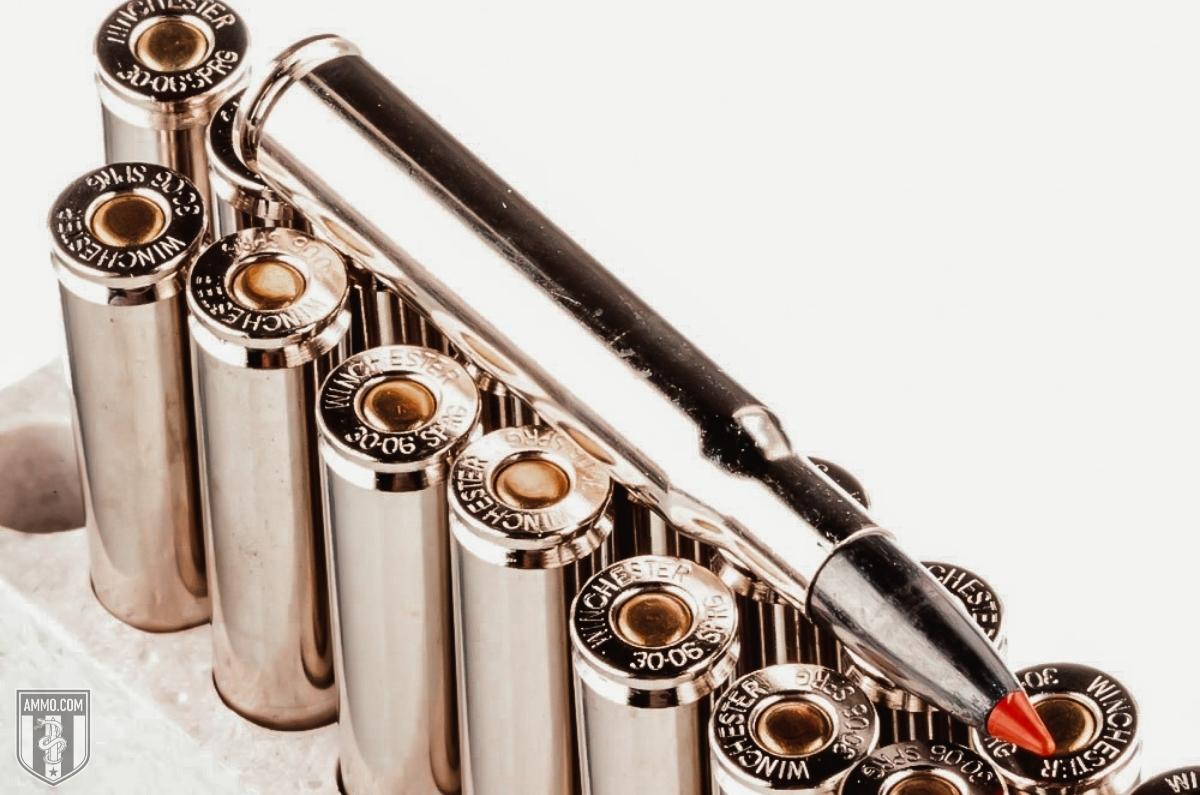
Oh, and you actually need a shooting range that can accommodate 1,000-yard shots. In my home state of Indiana, there is exactly ONE range that allows shooters to go out to this distance and they have extremely stringent marksmanship requirements that you must meet before you can even set foot on the 1,000-yard range.
If these forum posters think they can pull off even an 800-yard shot without practicing, well I say, “Good luck to you sir!” Because you’re going to need it!
The simple fact is this, most hunters do not have the equipment, skills, time, or money to develop the ability to shoot this far. And you know what? That’s OK!
If you are an ethical hunter (which if you have read this far, I know you are), you should not even be considering taking a shot on any game animal at those distances because the probability that you wound the animal is significantly higher (if you hit them at all).
An ethical hunter will try to close the distance to a range they are comfortable taking the shot or passing on the animal altogether. Therefore, the internet group reasoning for purchasing a 300 Win Mag because of its ability to shoot out to 1,000 yards is null and void in terms of hunting.
In my experience, ethical hunting shot distances are 500 yards or less with 300 yards being the average maximum distance most hunters are comfortable with. Shot placement is always the most important thing to ethically harvesting an animal, and the closer you are the better your shot placement will be.
Bearing that in mind, what advantage does the 300 Win Mag offer over the 30-06 Springfield at 300-500 yards? The answer is not much.
Both hunting cartridges will have more than enough muzzle energy to take down a bull elk (1,000+ ft-lbs) at these distances, which means they are more than enough for Whitetail and Mule Deer as well.
Therefore, it makes logical sense that the better option is the cartridge that has less recoil (better shot placement), allows for faster follow-up shots, and is generally less expensive.
Hence my reasoning for selecting the 30-06 Springfield as the superior choice for hunting medium to large game animals across North America.
Neither cartridge is recommended for varmint hunting as they are simply too much bullet for the job. For something like this, I’d recommend using the cheaper and softer shooting 223 Rem or perhaps a 22-250.
For deer to black bear, the 30-06 loaded with quality hunting ammo like a Nosler Partition will serve you well.
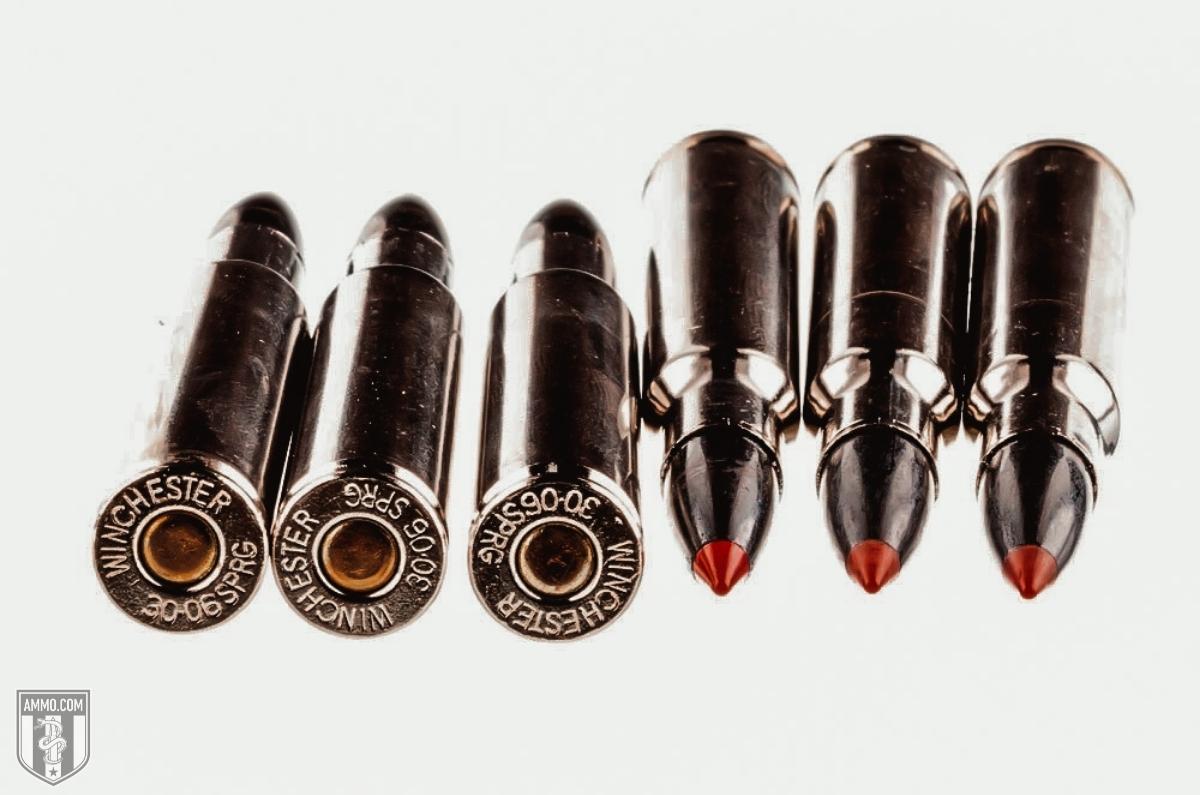
Ammo Price and Availability
In terms of ammo availability and price, without question, the 30-06 is the superior choice.
As the 30-06 has been in service for well over 100 years now, the amount of work that has been done on the cartridge is extensive. Advancements in bullet technology and powders have come a long way to make the 30-06 an effective large game slaying cartridge.
Virtually every ammo manufacturer has an offering in 30-06, but the same cannot be said for .300 Win Mag.
The 300 Winchester Magnum was not released until 1963, and although it has gained a lot of popularity, not as many ammo options are available for this caliber.
You still have plenty to choose from, but overall, there are fewer options for .300 Win Mag.
As for price, cheap full metal jacket (FMJ) ammo can be had for about $1.50/round for 30-06 compared to $2/round for 300 Win Mag.
That might not sound like a huge difference, but when you start looking at premium hunting ammo from Hornady, Nosler, Barnes, Norma, or Federal, the price jumps up significantly. Premium hunting ammo for 30-06 will run you anywhere between $2-3/round. In contrast, you should expect to pay no less than $3 and up per round for the likes of Federal Premium 300 Win Mag ammo, Hornady Superformance, or Barnes VOR-TX.
With 30-06, you can practice with your hunting rifle more which means you will be better prepared when hunting season comes around.
Rifle Price and Availability
Rifles for both the 30-06 and 300 Win Mag are not in short supply.
Every major rifle manufacturer will have an offering in both cartridges.
Some popular bolt action rifle options are:
- Remington 700
- Savage 110
- Browning A-Bolt
- Ruger American
- Winchester Model 70
- Tikka T3
And although you will not lack options in either caliber, there will simply be more in 30-06 as it has been a military caliber. There are many surplus options for 30-06, like the 1903 Springfield and M1 Garand, that are simply not available for 300 Win Mag.
It was only within the last 12 years that the 300 Win Mag was adopted as a military round, and as such there are no surplus rifles available. And when there are more rifle options available, this means that the price will be lower.
In general, a rifle chambered in 30-06 will be a little cheaper than one chambered in .300 Win Mag.
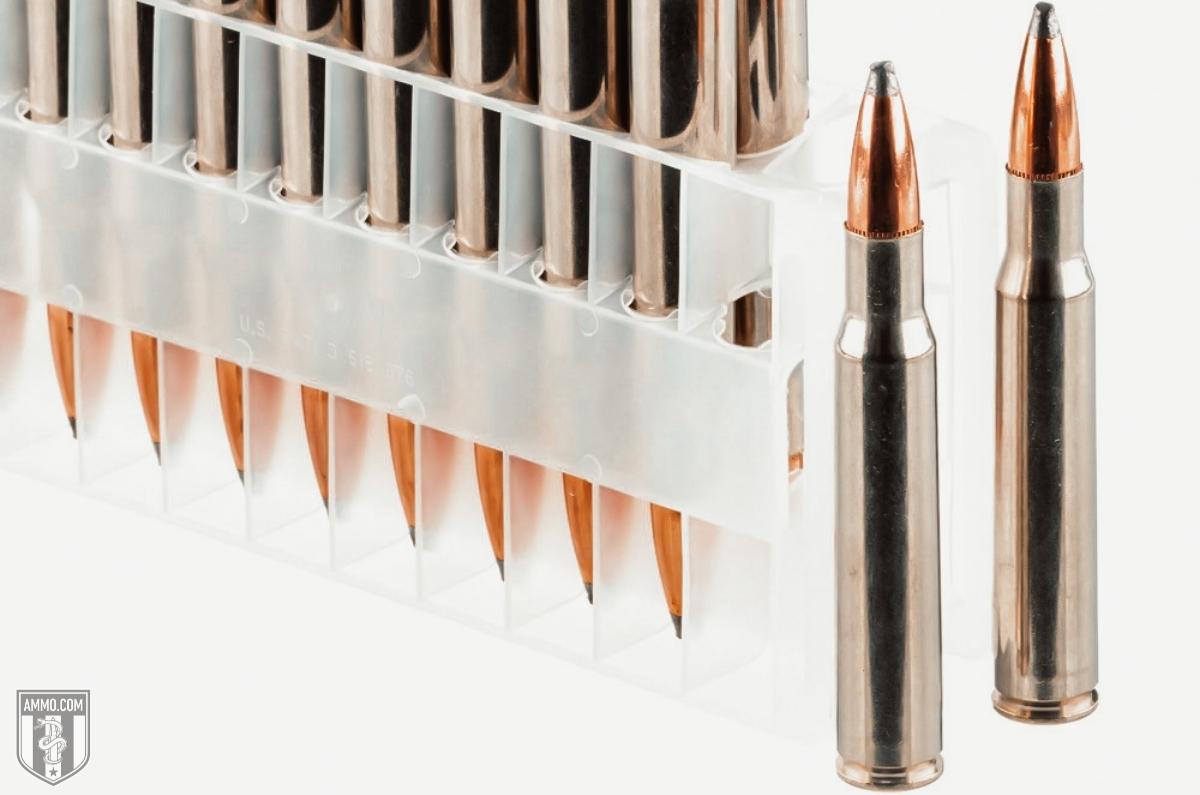
Reloading
As the .300 Win Mag and the 30-06 shoot the same .308” diameter bullet, it is nothing short of a reloader’s dream as you can stock up on one bullet type for both calibers.
Furthermore, if you want to shoot long-range (and have the location to do so), handloading is the best way to tighten up your groups and squeeze every fps of muzzle velocity out of either cartridge (Warning: never load over the maximum charge listed in your reloading manual!)
The widespread success of the 30-06 (and 308 Winchester) means that you have a wide variety of different bullet weights, bullet profiles, and powders to choose from to create your ideal reload.
Reloading for both the 30-06 and .300 Win Mag is a breeze and you should not worry about any lack of components or reloading dies as these are both extremely popular cartridges for handloading.
.300 Win Mag vs .30-06: Ballistics
Below are the ballistics tables for both .300 Win Mag and .30-06 Springfield comparing multiple popular loadings for each cartridge. Here you can see how each cartridge stacks up against the other, and the differences in the ballistics are impressive.
The 300 Win Mag has a clear advantage over the 30-06 in terms of muzzle velocity and muzzle energy as we have alluded to earlier in the article.
When looking at the lighter bullet options for the .300 Win Mag, you’ll note that the 150 grain 300 Win Mag has a higher muzzle velocity than the 55 grain .223 Rem! (3,400 fps vs 3,200 fps, respectively)
Generally, the 30-06 Springfield is going to be about 800 fps slower at the muzzle than the 300 Win Mag. The same can also be said for muzzle energy as the .300 Win Mag will have about 500+ more ft-lbs of energy at the muzzle compared to the 30-06. There’s no denying that the 300 Win Mag is a high velocity, hard-hitting round!
.300 Win Magnum Ballistics
Note: This information comes from the manufacturer and is for informational purposes only. The actual ballistics obtained with your firearm can vary considerably from the advertised ballistics. Also, ballistics can vary from lot to lot with the same brand and type load.
.30-06 Springfield Ballistics
Note: This information comes from the manufacturer and is for informational purposes only. The actual ballistics obtained with your firearm can vary considerably from the advertised ballistics. Also, ballistics can vary from lot to lot with the same brand and type load.
300 Win Mag: Joining the Magnum Lineage – Go Big or Stay Home
Let’s call a spade a spade my fellow shooters, here in North America we like our Magnum cartridges!
From Dirty Harry and his .44 Magnum Smith and Wesson handgun to big game hunters in the forests of Northern Canada, many shooters like that extra stopping power that magnum cartridges bring to the table.
And the 300 Winchester Magnum steps into the Magnum Lineage like any other magnum cartridge on the market…with a deafening BANG!
Before the 300 Winchester Magnum exploded onto the shooting scene in 1963, there were several other 30-caliber options that we would classify as Magnum ammo by today’s standards.
The most prominent of these was the 300 H&H Magnum that had been on the market since 1925. However, the 300 H&H Magnum could not fit into a standard action Mauser or Springfield receiver and required a custom Magnum action, which severely handicapped its acceptance in the shooting community.
The next attempt at a magnum rifle cartridge was attempted by Roy Weatherby with the 270 Weatherby Magnum in 1943 and the 300 Weatherby Magnum in 1944.
300 Win Mag: Genesis of the Quintessential Big Game Hunting Cartridge
In 1958, Winchester figured they should probably get in on the magnum craze and introduced 3 new cartridges to their line: the 264 Winchester Magnum, the 338 Winchester Magnum, and the 458 Winchester Magnum.
Notice any glaring omission from that list? There’s no 30-caliber option!
Wildcatters (hand loaders who take it upon themselves to develop new cartridges) quickly jumped on this glaring hole in the Winchester line and developed the 30-338 Winchester. Norma Precision also took the opportunity to get in on the action and developed the 308 Norma Magnum in 1960.
It was at this point that Winchester figured that maybe they might do well by introducing a 30-caliber magnum rifle cartridge offering. And in 1963, Winchester introduced the 300 Win Mag in its long-action Winchester Model 70 bolt action rifle.
Remington quickly followed suit, introducing a 300 Win Mag offering in its popular Rem 700 bolt action rife. Since then, the 300 Winchester Magnum has quickly become one of the most successful magnum rifle cartridges on the market today.
The 300 Winchester Magnum was developed from the belted 375 H&H Magnum cartridge and sports a whopping case capacity of 91.5 gr of water and a max pressure of 64,000 psi based on SAAMI specifications.
This voluminous case capacity allows the 300 Win Mag to pack in the powder and push the .308” diameter bullet to its limits.
At the muzzle, a 150 grain bullet is screaming downrange at about 3300 fps with a back-breaking 3600 ft-lbs of energy. That is some serious power! Standard loadings for the 300 Win Mag range between bullet weights of 165 and 220 gr.
Many shooters believe that the belt around the case head is required to contain the “case-splitting” pressure that the 300 Win Mag must exude. However, this is a common misconception.
Based on the case design, the belted cartridge is superfluous. However, Winchester retained the design as a marketing strategy to link the cartridge to its heavy-hitting predecessor, the 375 H&H Magnum.
The strategy was wildly successful as the 300 Winchester Magnum has become one of the most popular magnum cartridges on the market, surpassing the 300 WSM, 7mm Rem Mag, and 270 Weatherby Magnum in popularity.
A Brief History of the 30-06 Springfield: America’s Beloved Rifle Cartridge
America’s love affair with 30 caliber rifle rounds began back in the Wild West with the introduction of the 30-30 Winchester. Later, the U.S. Army developed the 30-40 Krag to be its smokeless powder replacement for the .45-70 Government.
Around 1901, the U.S. Military started developing a new cartridge to replace the 30-40 Krag. The American Expeditionary Forces were very familiar with the effectiveness of the 7mm Mauser cartridge, suffering staggering losses at the hands of the 1893 Mauser at the Battle of Santiago during the Spanish-American War.
It was clear that the 30-40 Krag was an inferior design compared to the Spanish Mausers and the military did not want to fall behind with advancements in bolt action rifle and cartridge technology.
At the time, heavier bullet weights were thought to be the superior ballistic choice. Therefore, the initial design submitted in 1903 used the same 220-grain round-nose bullets fired by the 30-40 Krag.
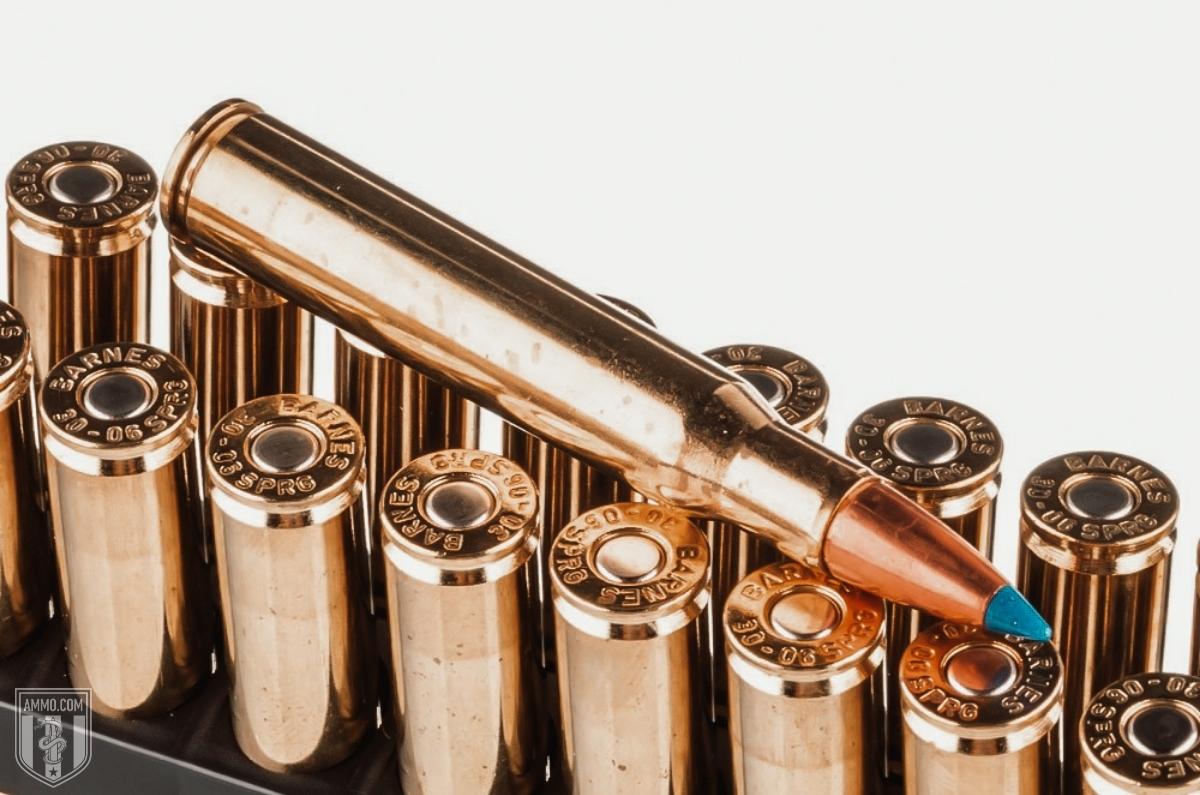
The 30-03 Springfield was patterned after the famous 7x57mm Mauser cartridge, sharing identical case head dimensions.
However, it didn’t take long for the American generals to take note that multiple European nations were favoring higher velocity, Spitzer (pointed) projectiles in their new bolt action rifles.
Not wanting to get left behind, the U.S. Military was quick to adopt a similar design. In 1906, the new cartridge that fired a 150-grain Spitzer flat-based bullet was submitted and accepted. The original design for 30-06 Springfield achieved a muzzle velocity of 2,700 fps, packed 2,429 ft-lbs of muzzle energy, and a maximum pressure of 60,200 psi (SAAMI specs).
And thus the 30-06 Springfield was born. The “30” designates the bullet caliber and the “06” (pronounced: aught six) designates the year of its adoption.
Although the 30-06 initially gained popularity with the Army’s new bolt action rifle, the 1903 Springfield (which looked surprisingly similar to a Mauser…coincidence I’m sure), it truly became World Famous with the introduction of the semi-auto M1 Garand during World War II.
The 30-06 Springfield was the ammo carried by our soldiers who fought in the trenches on the Western Front in World War I, stormed the beaches of Normandy in WWII, assaulted the 38th Parallel in Korea, and saw limited use in the jungles of Vietnam.
Not only has the 30-06 seen massive success on the battlefield, but it has also seen immense commercial success in the civilian market. Big game hunters loved the amazing terminal ballistics and long-range that the 30-06 offered while having a recoil impulse that is not punishing to the shoulder.
Since its introduction to the civilian market, the 30-06 has been the de facto hunting cartridge that all other hunting caliber cartridges are measured against. The most popular loadings for 30-06 range between 150 and 180 gr bullet weights with the 180 grain bullet being the most popular with big game hunters. However, specialty ammo can go as low as 110-grain bullets and as high as 220 grain projectiles.
The 30-06 Springfield is incredibly versatile, allowing hunters to customize their loads depending on the game animals they are stalking. Lighter bullet weights like the 150 and 165 gr Nosler Partition or Accubond can be utilized for whitetail or mule deer, while you should have good luck with the 200 gr Barnes TSX when you have a vital shot lined up on that trophy elk in your crosshairs.
The 30-06 is truly a rifle cartridge of American legend and has survived the test of time, as it is still one of the most popular hunting rounds in the world over 100 years later. But does the 300 Winchester Magnum simply outclass the tried and true 30-06? Let’s compare these two spectacular long-range cartridges.
Final Thoughts on .300 Win Mag vs .30-06 Springfield
The .300 Win Mag was developed to be an incredibly accurate long-range rifle cartridge capable of shooting past 1,000 yards. And it does this extremely well.
The 30-06 Springfield was battle-tested on the beaches of Normandy and has proven to be a capable hunting cartridge in the forests across North America.
On paper, the 300 Win Mag has superior ballistics in terms of muzzle velocity, muzzle energy, trajectory, effective range, and ballistic coefficient. However, all these benefits are at the cost of punishing recoil and reduced barrel life.
But with all these advantages, should you go out and sell the Remington 700 or Browning A-Bolt chambered in 30-06 that you inherited from your grandfather and get a 300 Win Mag? Absolutely not!
The 30-06 is a versatile hunting cartridge that has withstood the test of time, claiming every large game animal from the Great Plains to the Rocky Mountains. Less recoil and faster follow-up shots allow the 30-06 to be just as potent as the 300 Win Mag within 500 yards and you should never feel under-gunned when you bring your 30-06 into the woods.
But if you can take the recoil and you take comfort in knowing you are bringing a high velocity, flat shooting cartridge to bear on that Whitetail in your sights, the 300 Win Mag won’t let you down so long as your shot placement is on point.
Hunting season is fast approaching, it’s time to get out to the range and practice with your favorite bolt action rifle and get ready. Your trophy deer or elk is waiting for you, show him what a 30-06 or a .300 Win Mag can do!















![Air gun 101: The differences between .177 & .22 – Which jobs they do best ? [Infographic]](https://airgunmaniac.b-cdn.net/wp-content/uploads/2024/11/1773-218x150.jpeg)






























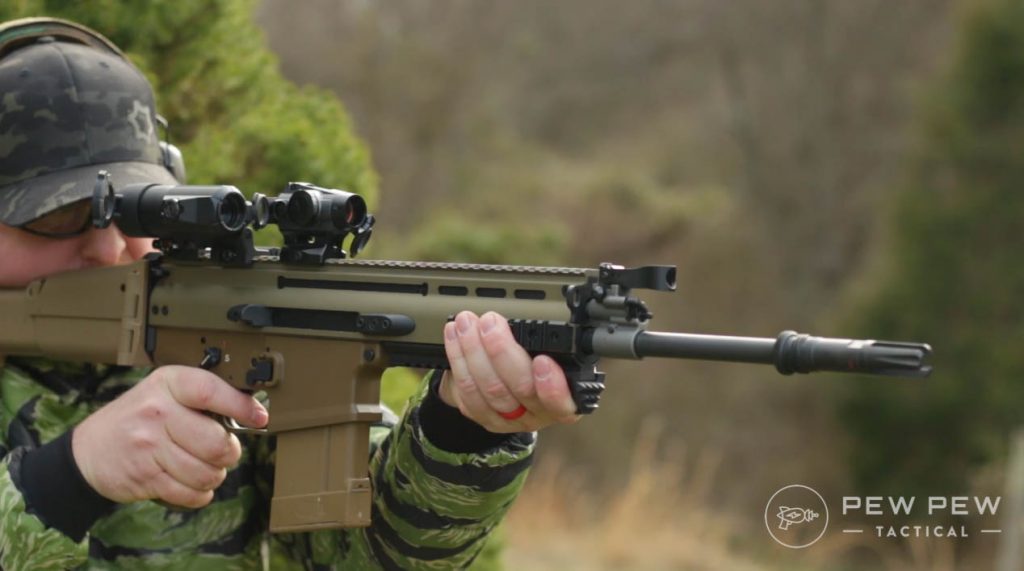
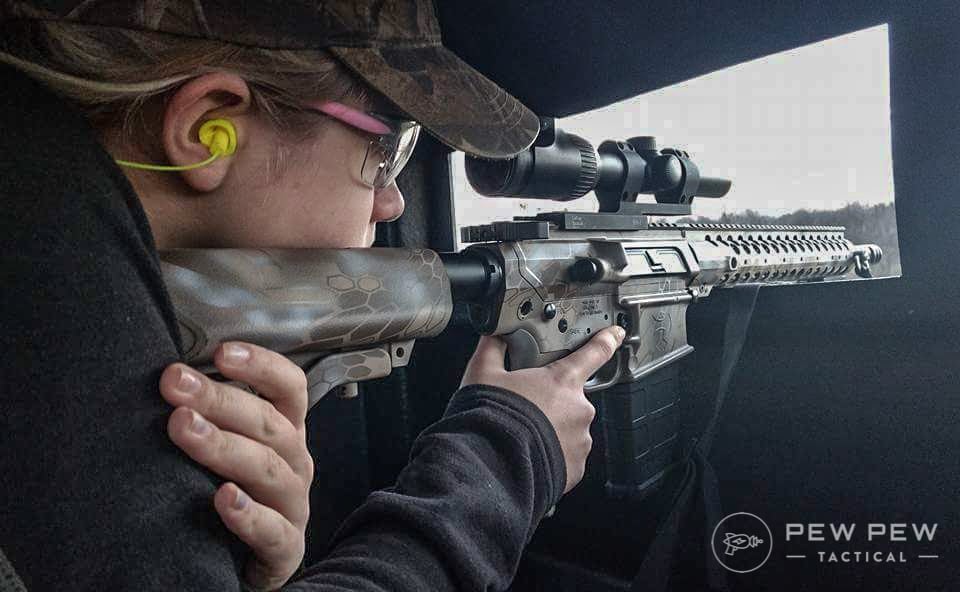

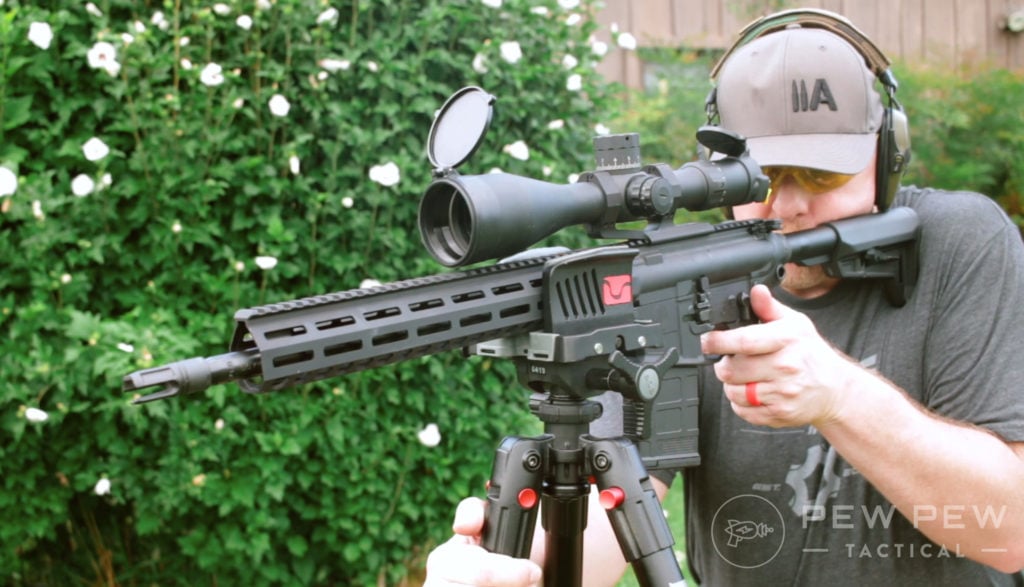

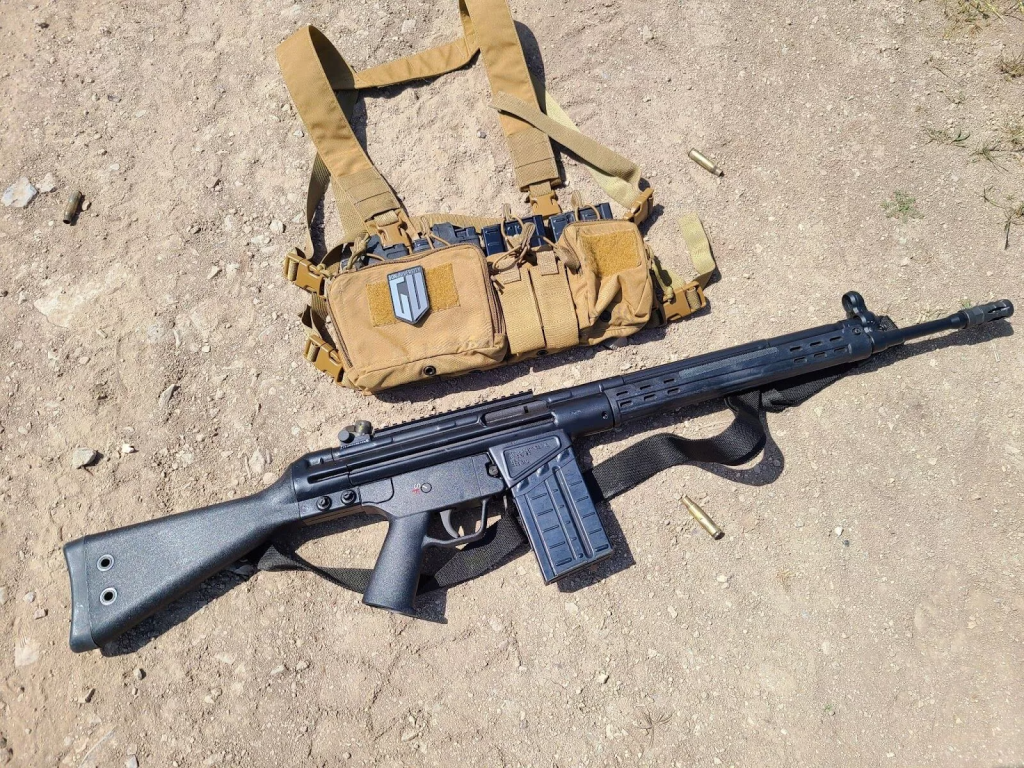

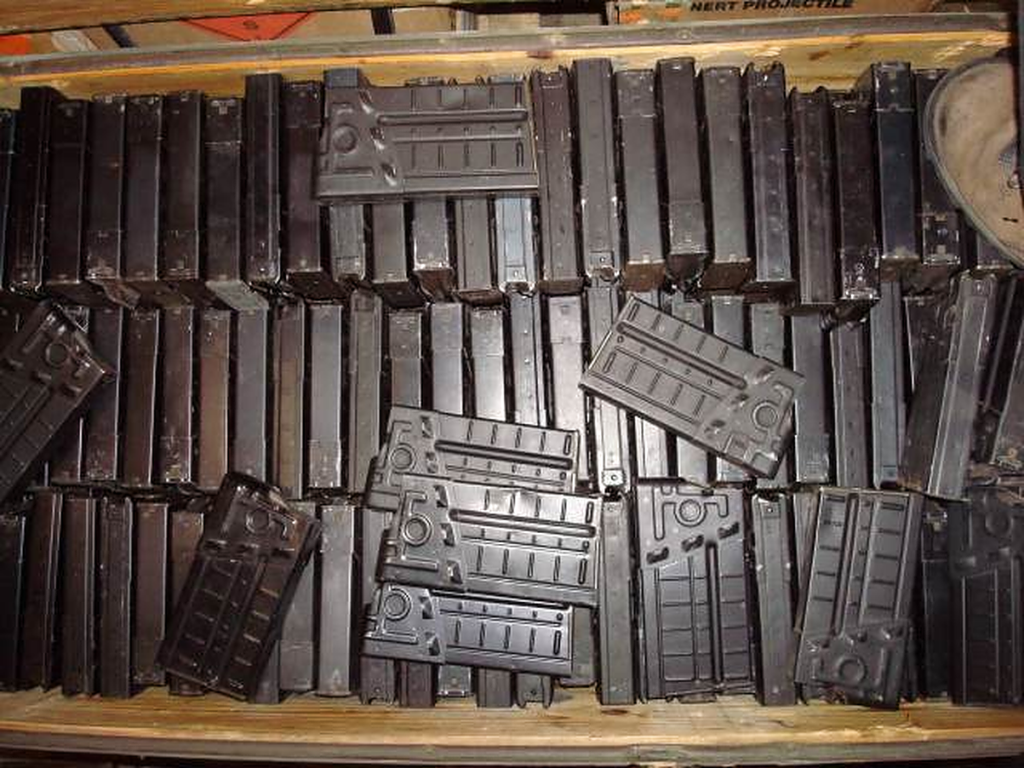
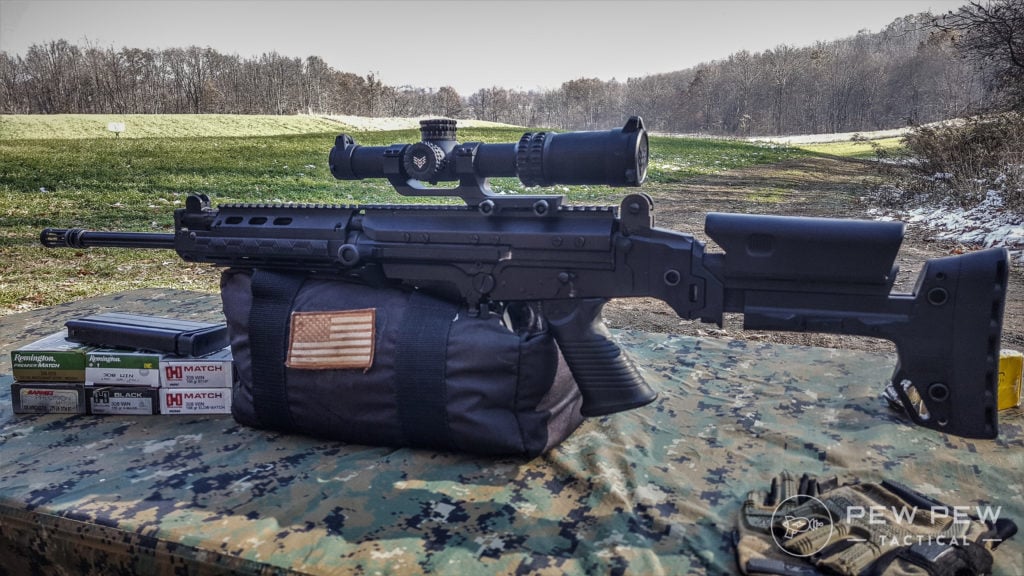
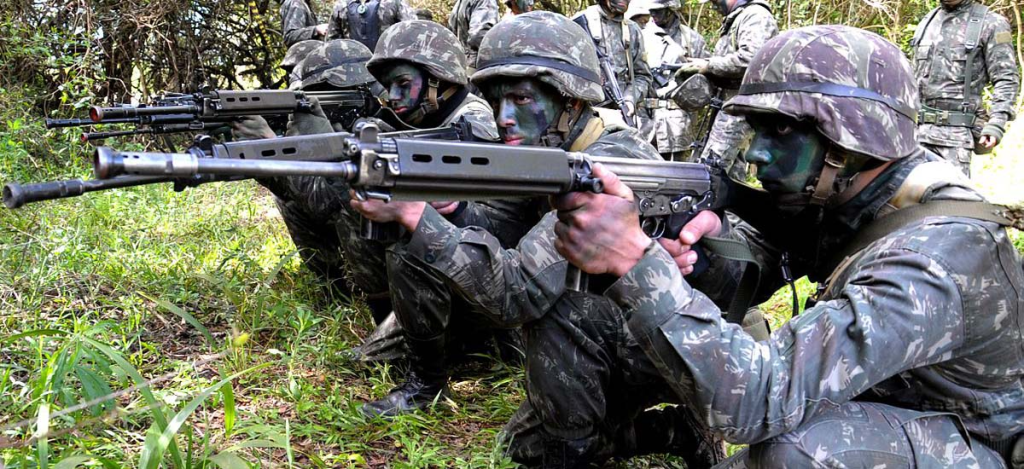

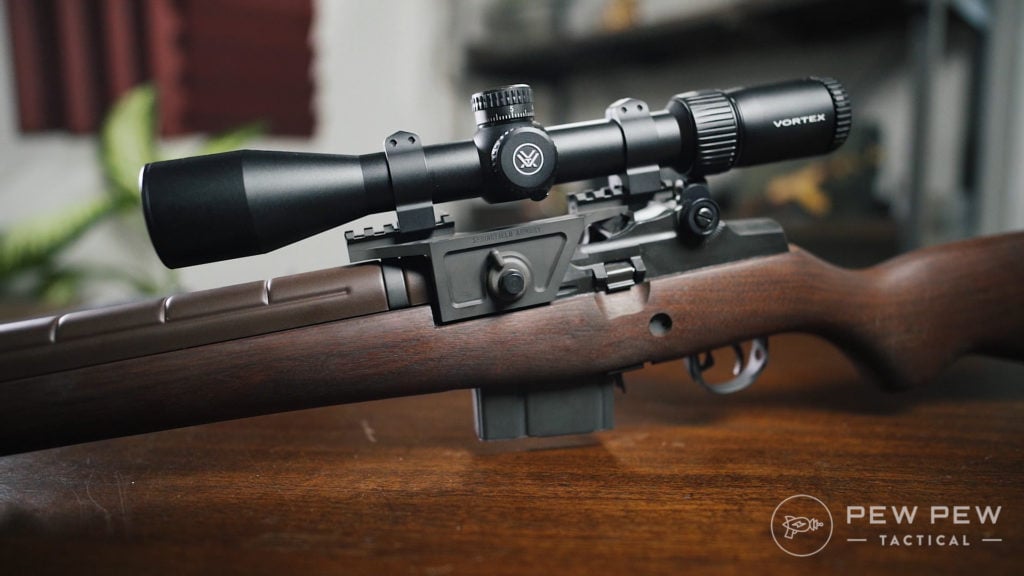
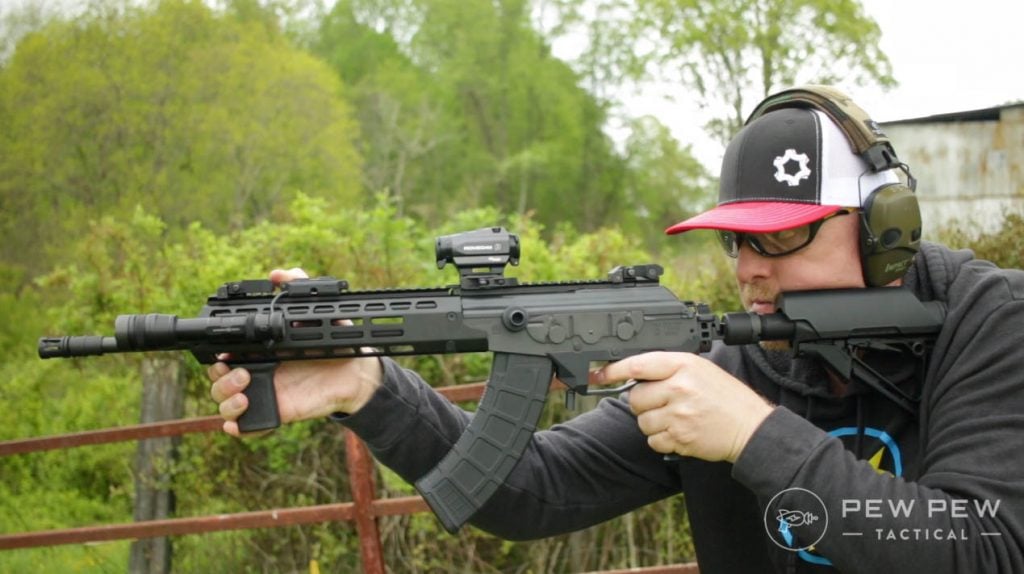
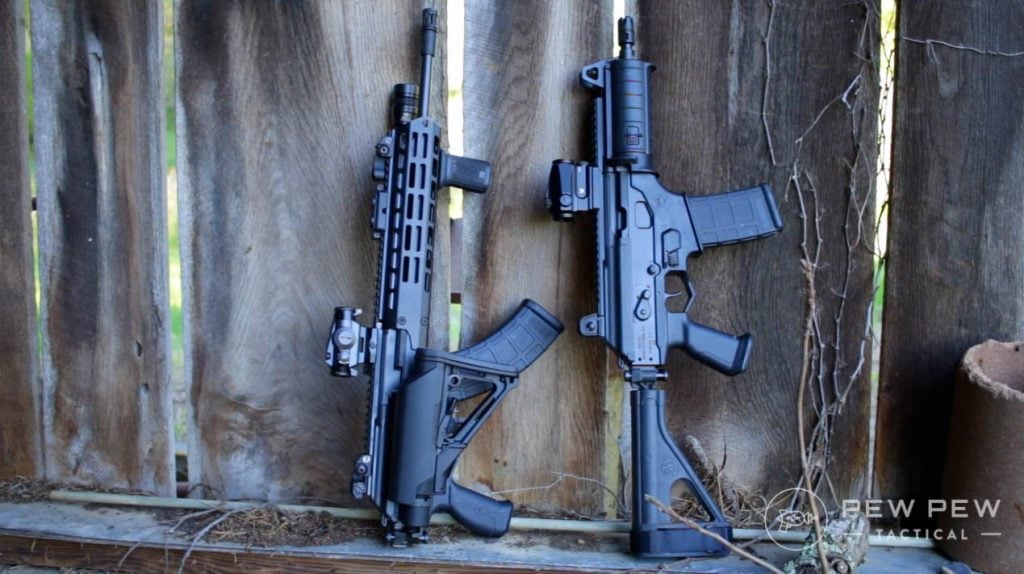
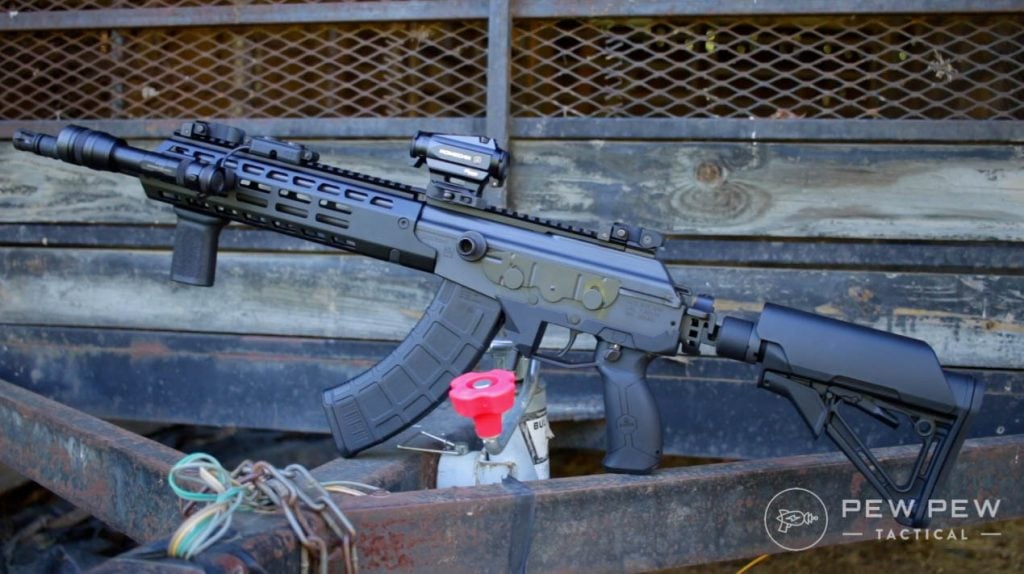
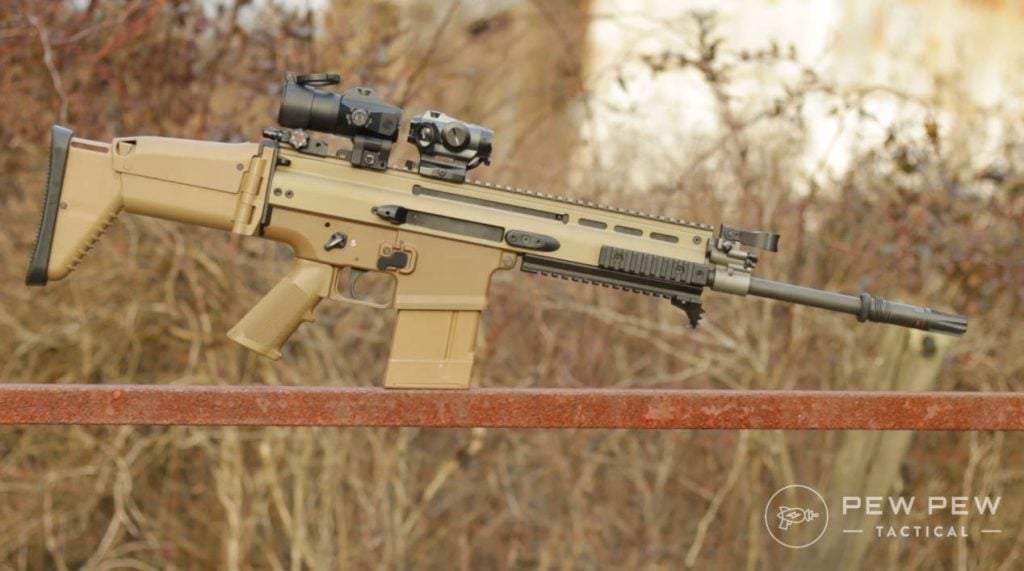
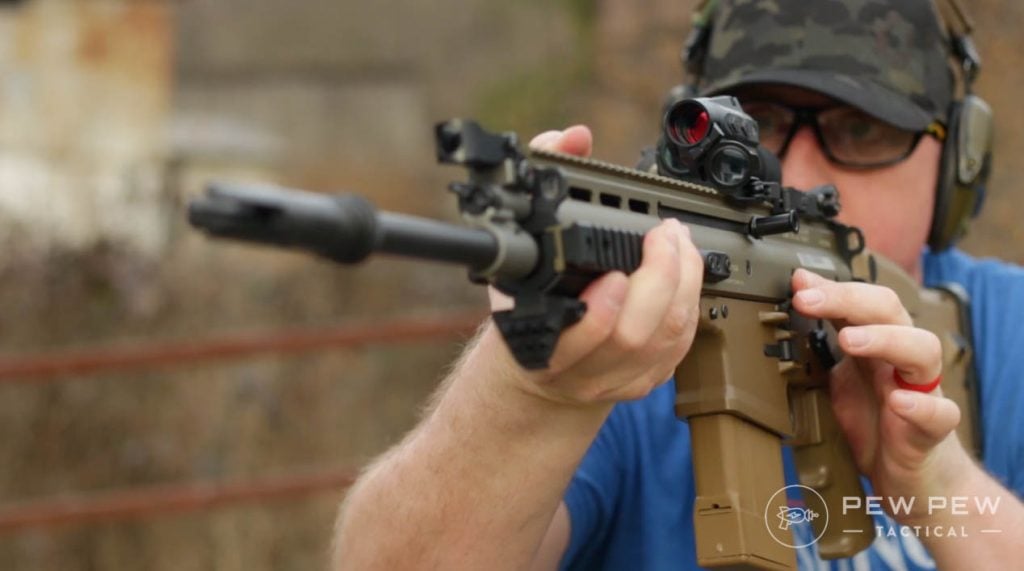
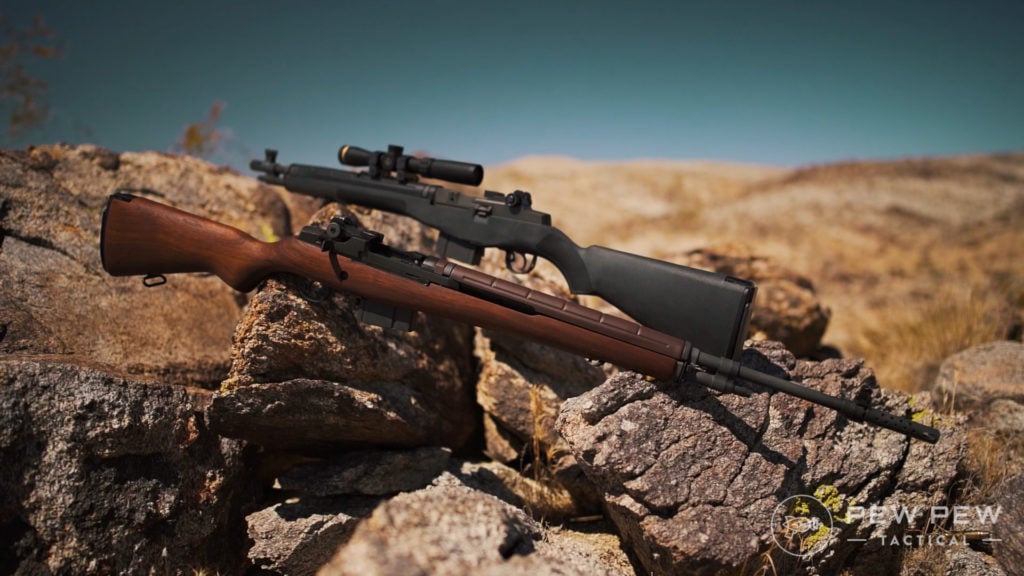





 As you take your seat next to the crackling campfire at elk camp, you look up as the sparks flutter into the night sky. The evening is brisk, and you are looking forward to the hot coffee that is starting to boil in the blue enamel kettle on the fire.
As you take your seat next to the crackling campfire at elk camp, you look up as the sparks flutter into the night sky. The evening is brisk, and you are looking forward to the hot coffee that is starting to boil in the blue enamel kettle on the fire.









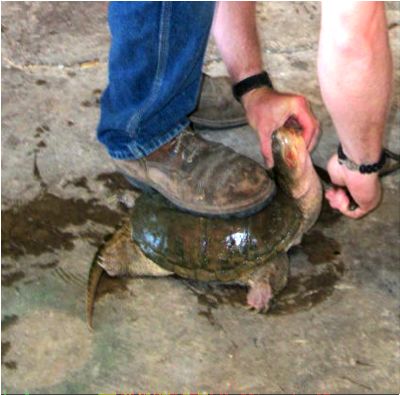 Step 3: I use a 2×12 with a 16 penny nail drove through the bottom sticking up to hold my turtle in place. Simply drop the turtle upside down on the nail and it’ll stay in place while you cut it up. This way also allows you to spin the turtle as you work. Begin by cutting off each foot. The joints are about an inch behind the claws. Use your knife to gently find your way between joints. This will prevent the turtle from clawing and scratching you during the butchering process.
Step 3: I use a 2×12 with a 16 penny nail drove through the bottom sticking up to hold my turtle in place. Simply drop the turtle upside down on the nail and it’ll stay in place while you cut it up. This way also allows you to spin the turtle as you work. Begin by cutting off each foot. The joints are about an inch behind the claws. Use your knife to gently find your way between joints. This will prevent the turtle from clawing and scratching you during the butchering process. 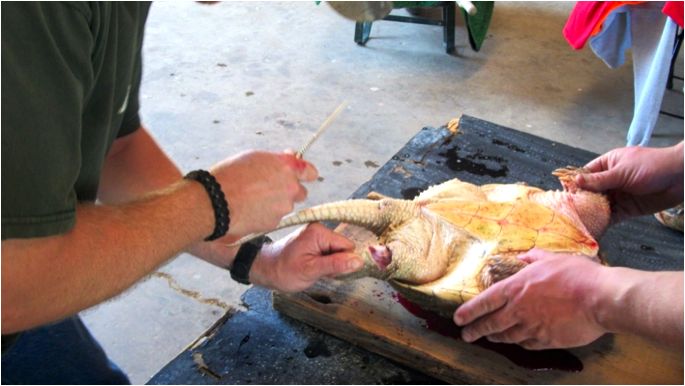
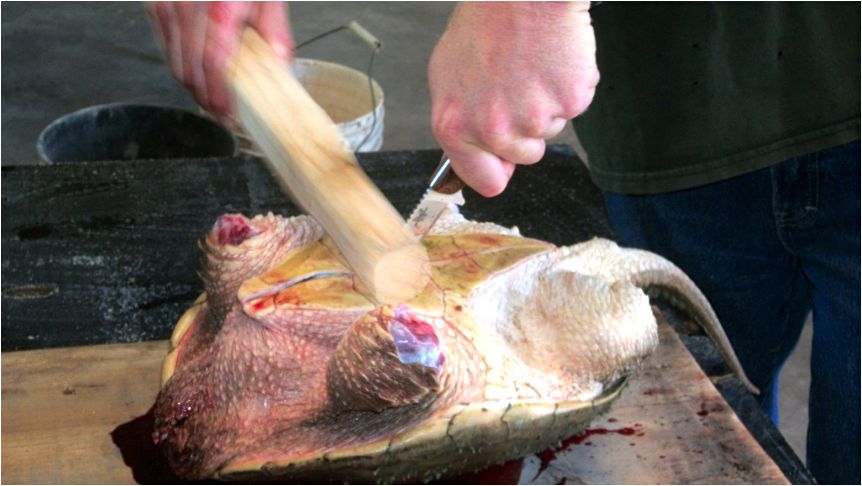 Step 5: Skin the turtle from the middle out. Be careful when starting because the front shoulder blade is right next to the bottom shell. Once again, let your knife “feel” its way through.
Step 5: Skin the turtle from the middle out. Be careful when starting because the front shoulder blade is right next to the bottom shell. Once again, let your knife “feel” its way through. 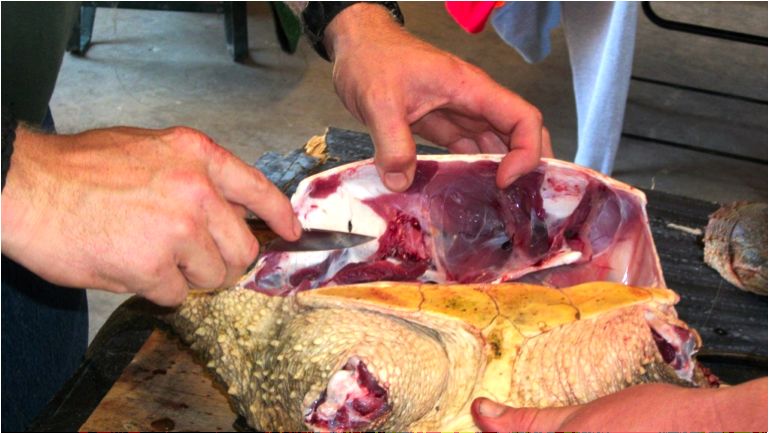
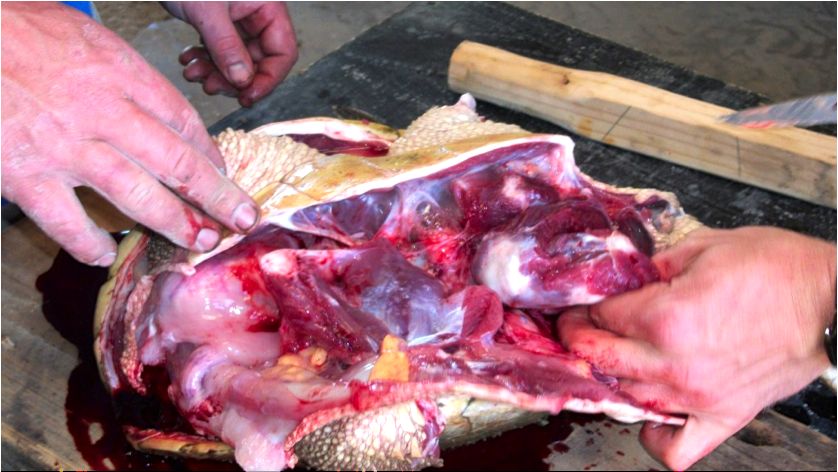 Step 7: Once the skin and bottom portion of the shell are removed. You’ll now quarter out the limbs. Turtles have a different bone structure then other animals so it’ll take some trial and error to get the quarters off.
Step 7: Once the skin and bottom portion of the shell are removed. You’ll now quarter out the limbs. Turtles have a different bone structure then other animals so it’ll take some trial and error to get the quarters off. 
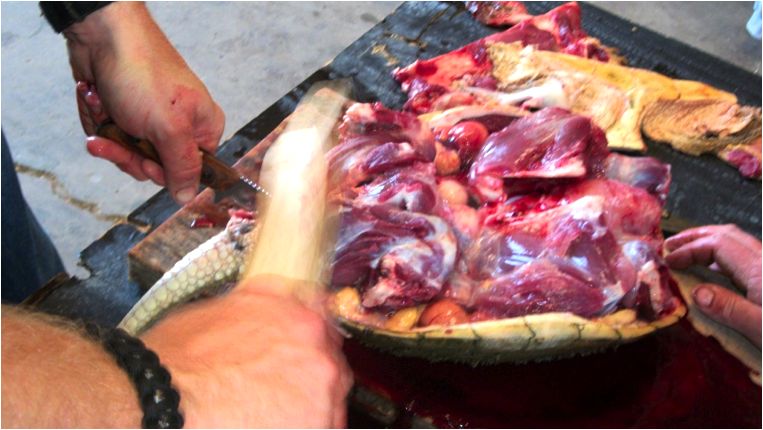 This one happened to be a female, not a bad thing for here. Notice all the eggs, which can also be eaten.
This one happened to be a female, not a bad thing for here. Notice all the eggs, which can also be eaten. 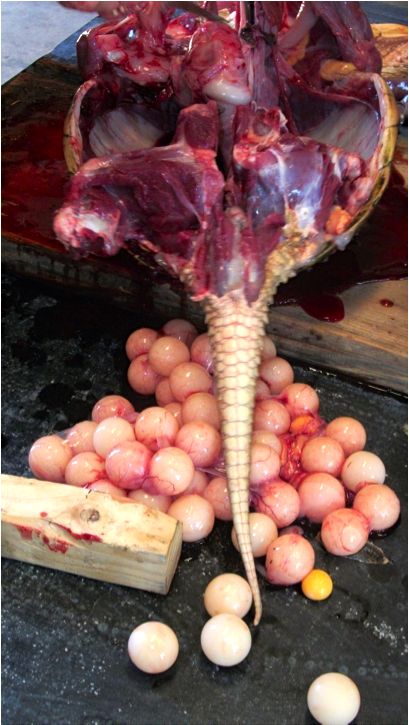 Step 8: Work out the rest of the quarters.
Step 8: Work out the rest of the quarters. 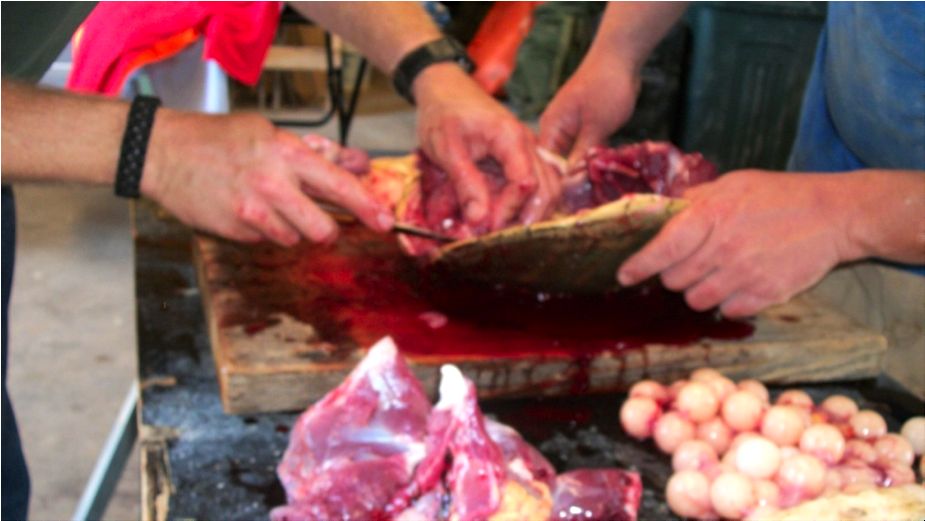
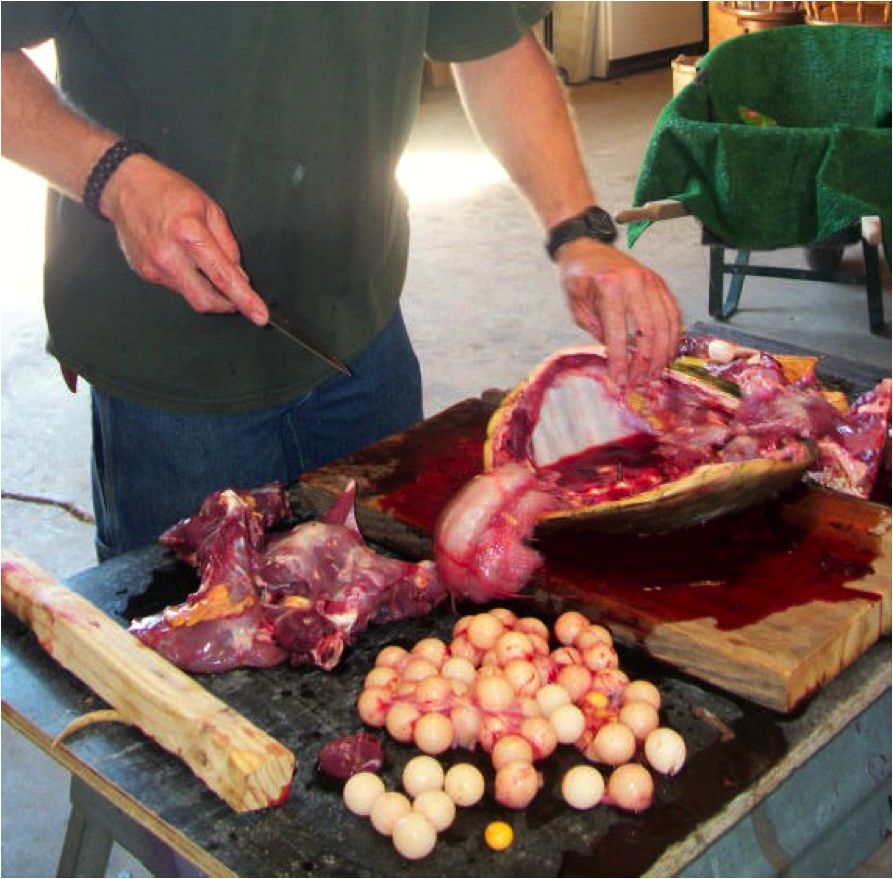
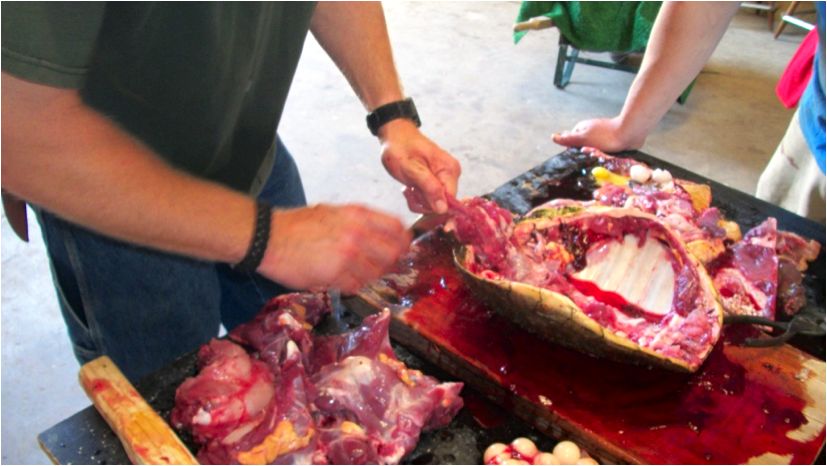 Step 9: Using your baton again, gently cut down each side of the backstrap. Remove each side and trim off the cartilage.
Step 9: Using your baton again, gently cut down each side of the backstrap. Remove each side and trim off the cartilage. 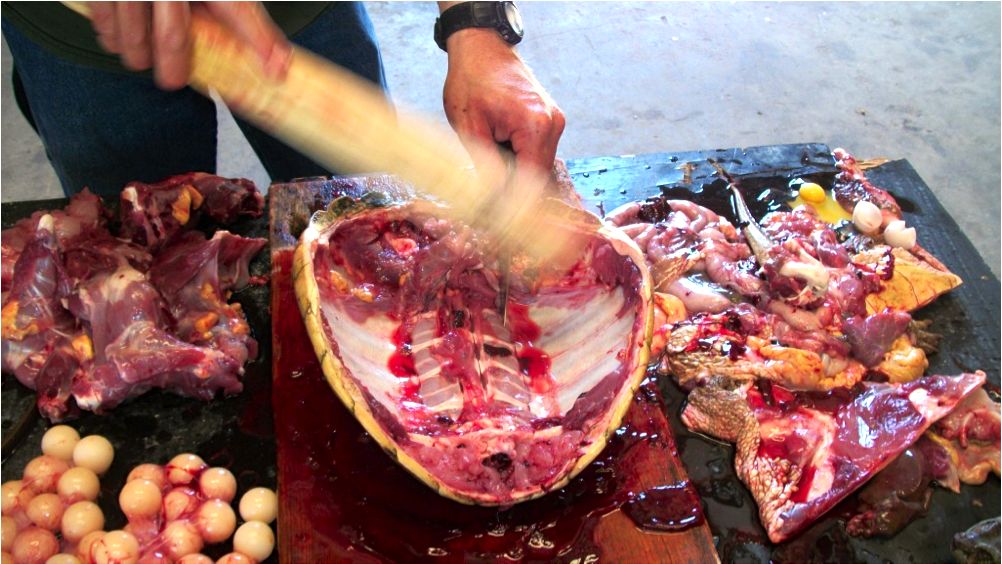
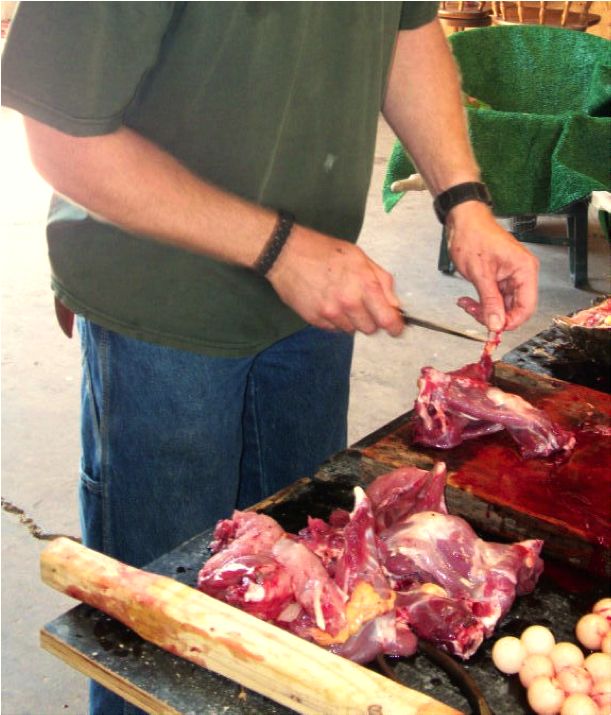 Step 10: From this point, trim the meat; cutting off any damaged parts, yellow linings, or other unwanted parts.
Step 10: From this point, trim the meat; cutting off any damaged parts, yellow linings, or other unwanted parts. 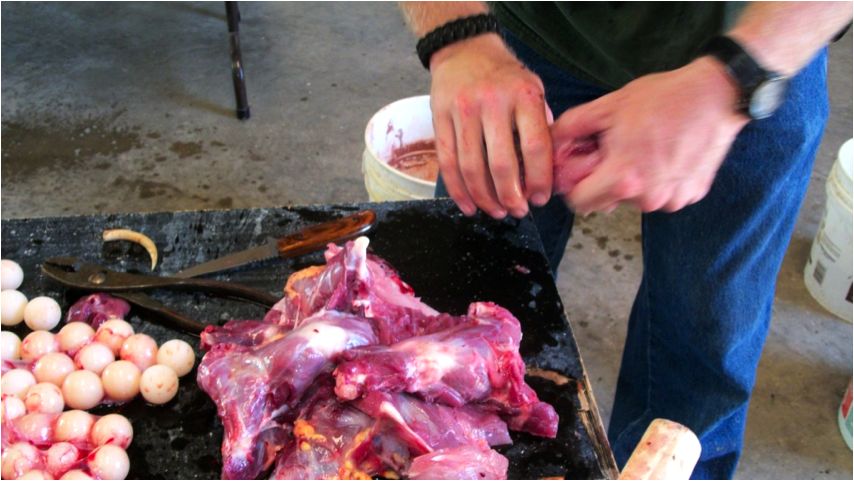 Step 11: Rinse the meat and soak in salt water overnight in the refrigerator. What’s left over from butchering can be used for fishing bait or trapping bait (where legal).The shell works as a good attractor for trapping.
Step 11: Rinse the meat and soak in salt water overnight in the refrigerator. What’s left over from butchering can be used for fishing bait or trapping bait (where legal).The shell works as a good attractor for trapping. 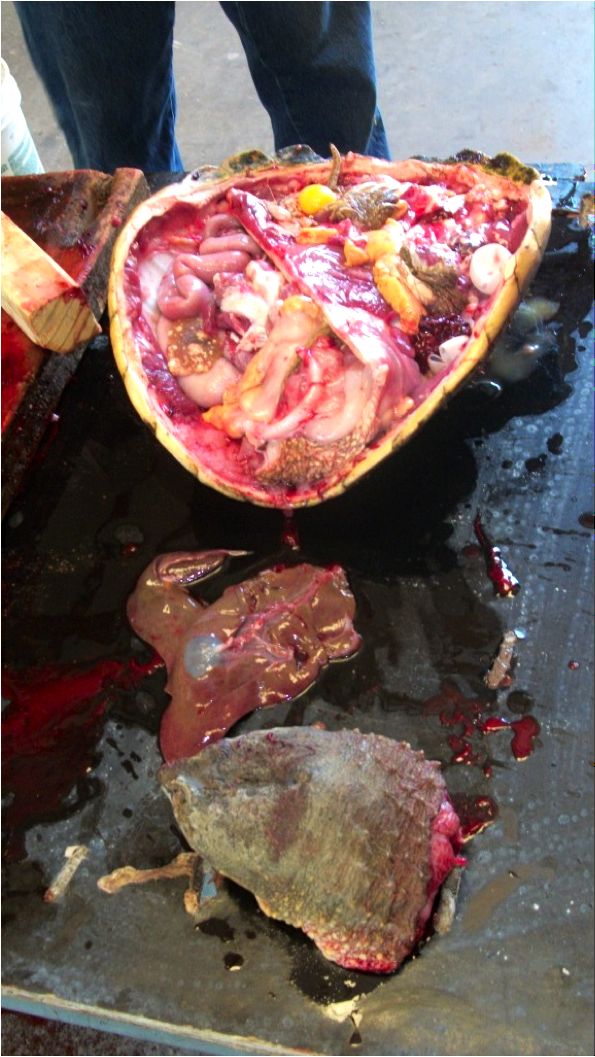 Step 12: Lastly, when I make turtle I boil the meat for about 90 mins. This will tenderize it and cook it. For flavoring I’ll then throw it into the cast iron skillet with a little oil and seasoning. Brown each side and you’ll be good to go. Turtle is very good and cutting one up is a skill worth knowing.
Step 12: Lastly, when I make turtle I boil the meat for about 90 mins. This will tenderize it and cook it. For flavoring I’ll then throw it into the cast iron skillet with a little oil and seasoning. Brown each side and you’ll be good to go. Turtle is very good and cutting one up is a skill worth knowing.











![Air gun 101: The differences between .177 & .22 – Which jobs they do best ? [Infographic]](https://airgunmaniac.b-cdn.net/wp-content/uploads/2024/11/1773-150x150.jpeg)


